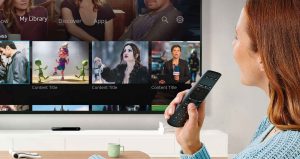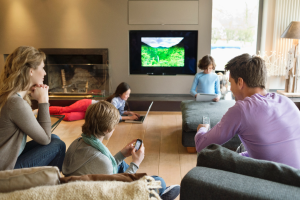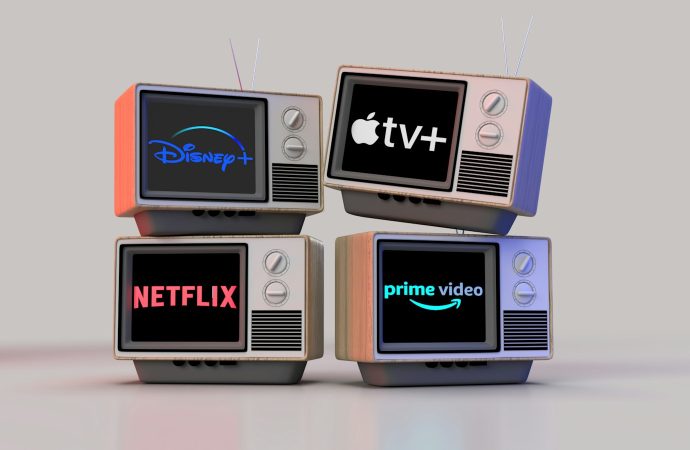Introduction The media landscape has undergone a dramatic transformation over the past decade, driven largely by the rise of streaming services. As digital technology continues to evolve, the way people consume content has shifted significantly. This article explores the profound impact of streaming on traditional cable TV, delving into various aspects such as viewer preferences,
Introduction
The media landscape has undergone a dramatic transformation over the past decade, driven largely by the rise of streaming services. As digital technology continues to evolve, the way people consume content has shifted significantly. This article explores the profound impact of streaming on traditional cable TV, delving into various aspects such as viewer preferences, market dynamics, technological advancements, and future trends.
The Rise of Streaming Services

Image by: Yandex.com
- The Advent of Digital Platforms
Streaming services such as Netflix, Hulu, Amazon Prime Video, and Disney+ have revolutionized the entertainment industry. These platforms offer on-demand content that can be accessed anytime and anywhere, provided there is an internet connection. This convenience has led to a surge in the popularity of streaming services, challenging the traditional cable TV model.
- Content Variety and Original Programming
One of the key attractions of streaming platforms is their vast libraries of content, which include movies, TV shows, documentaries, and original programming. Unlike cable TV, which operates on a fixed schedule, streaming services allow users to binge-watch entire seasons of shows at their own pace. This flexibility has been a significant factor in the shift away from traditional cable TV.
Decline of Traditional Cable TV

Image by: Yandex.com
- Subscriber Losses
Traditional cable TV has seen a steady decline in subscribers over the past few years. Many viewers are “cutting the cord” in favor of streaming services that offer more affordable and flexible options. According to a report by eMarketer, the number of U.S. households with cable TV subscriptions dropped from 90.7 million in 2010 to 77.6 million in 2020.
- Changing Viewer Preferences
Viewer preferences have evolved with the advent of digital technology. Today’s audiences prefer personalized content recommendations, interactive features, and the ability to watch content on multiple devices. Traditional cable TV, with its rigid programming schedules and limited interactivity, struggles to meet these modern demands.
Technological Advancements

Image by: Yandex.com
- High-Speed Internet and Smart Devices
The proliferation of high-speed internet and smart devices has been a critical enabler of the streaming revolution. Faster internet speeds allow for seamless streaming of high-definition content, while smart TVs, smartphones, tablets, and streaming devices like Roku and Amazon Fire Stick make it easier for viewers to access their favorite shows and movies.
- Advances in Content Delivery
Technological advancements in content delivery, such as adaptive bitrate streaming and content delivery networks (CDNs), have improved the quality and reliability of streaming services. These technologies ensure that users experience minimal buffering and can enjoy high-quality video regardless of their internet connection speed.
Economic Implications

Image by: Yandex.com
- Cost Comparison
One of the most significant economic factors driving the shift from cable TV to streaming is cost. Traditional cable TV packages can be expensive, often bundled with channels that viewers do not watch. In contrast, streaming services offer more affordable subscription plans, with the option to choose specific channels or content packages.
- Advertising Revenue
The decline in cable TV subscriptions has also impacted advertising revenue. Advertisers are shifting their focus to digital platforms, where they can target specific demographics more effectively. Streaming services, with their data-driven approach, offer advertisers valuable insights into viewer behavior and preferences.
Future Trends

Image by: Yandex.com
- Integration of Streaming and Cable
As the lines between streaming and traditional cable TV continue to blur, some cable providers are adapting by integrating streaming services into their offerings. For example, many cable companies now offer streaming apps and on-demand content as part of their subscription packages. This hybrid approach aims to retain subscribers by offering the best of both worlds.
- Emergence of New Technologies
Emerging technologies such as 5G, virtual reality (VR), and augmented reality (AR) are set to further transform the media landscape. 5G promises faster and more reliable internet connections, enabling even higher-quality streaming experiences. VR and AR have the potential to create immersive viewing experiences, offering new ways for audiences to engage with content.
Conclusion
The impact of streaming on traditional cable TV is undeniable. As viewer preferences continue to evolve and technology advances, the media landscape will likely see further shifts. While traditional cable TV may never regain its former dominance, it is not entirely obsolete. By adapting to new trends and integrating digital offerings, cable providers can remain relevant in an increasingly digital world.
In summary, the rise of streaming services has fundamentally changed the way people consume content, leading to a decline in traditional cable TV subscriptions. Technological advancements, cost considerations, and changing viewer preferences have all played a role in this shift. As the industry continues to evolve, both streaming services and cable providers will need to innovate and adapt to meet the demands of modern audiences.
















